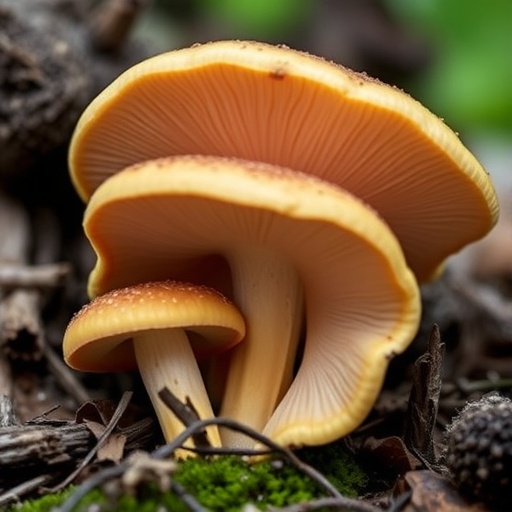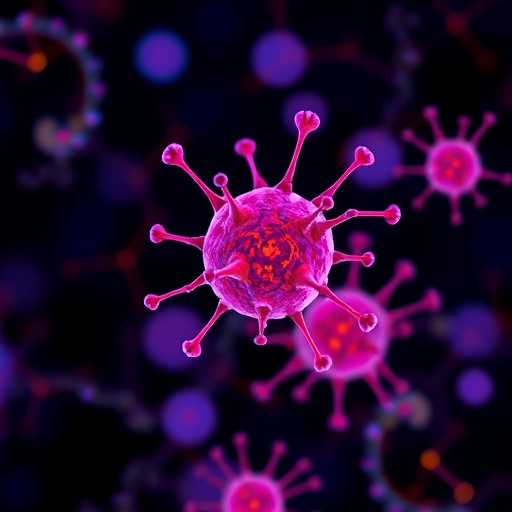In the evolving landscape of forensic science, researchers are increasingly turning to the natural world to uncover hidden truths at crime scenes. Among the various biological markers available, fungi are rapidly gaining recognition as potent forensic tools. This intriguing development opens a new chapter in forensic investigations, where the enigmatic world of fungi could become a cornerstone in solving mysteries and administering justice. Recent scholarly work has begun to unravel how these complex organisms contribute critical evidence that may complement traditional forensic methods.
Fungi, ubiquitous yet often overlooked, possess unique characteristics that allow them to thrive in diverse environmental conditions. Their ability to colonize surfaces, including human remains, and react to environmental changes, provides a dynamic timeline of postmortem events. By studying fungal growth patterns, researchers can estimate the time since death — a crucial piece of information that often challenges forensic experts. These biological clocks recorded in fungal development promise greater precision in temporal forensics, potentially improving the accuracy of death investigations.
Moreover, fungi exhibit species-specific growth responses to environmental variables such as temperature, humidity, and substrate composition. This specificity renders fungi a valuable indicator of the postmortem environment. Forensic mycologists are developing databases correlating fungal species and environmental factors to help reconstruct the circumstances surrounding a death. Such data enable the creation of ecological profiles that forensic teams can use to verify or dispute alibis and timelines offered during criminal investigations.
Traditionally, forensic science has leaned heavily on entomology, the study of insects, for postmortem interval estimation and crime scene analysis. However, fungi offer distinct advantages, particularly in scenarios where insect activity is minimal or compromised. Unlike insects, fungi do not depend on direct access to the corpse and can continue colonizing remains in sealed or concealed environments. This resilience means fungi can provide valuable forensic clues in cases involving burial, wrapping, or indoor concealment, where insects might be less prevalent.
At the microscopic level, fungi produce spores that are durable and easily dispersed by air currents or transferred via contact. These spores act as trace evidence linking suspects or objects to crime scenes. The unique molecular fingerprints of fungal communities can help trace movements and connections, similar to fingerprints or DNA, but from an environmental biological perspective. Advances in molecular biology, particularly DNA sequencing technologies, have deepened our understanding of fungal communities, making spore analysis a promising frontier in forensic evidence.
Significant strides have been made in the integration of fungal DNA barcoding techniques within forensic protocols. Barcoding allows for rapid and precise identification of fungal species from minimal samples. This high-resolution approach accelerates casework and enhances the reliability of fungal evidence in legal proceedings. As methodologies mature, we might witness the establishment of fungal biobanks akin to DNA databases, which can serve as reference libraries during criminal investigations.
Furthermore, fungi interact with human decomposition fluids and tissues in ways that alter their chemical and physical composition. These interactions can be mapped through metabolomic studies, revealing biomarkers indicative of the stage of decomposition or cause of death. Forensic metabolomics, combining chemistry and mycology, broadens the spectrum of diagnostic tools available to forensic teams, offering alternative pathways when classic methods fail or provide inconclusive results.
Current research also explores how environmental disruptions, such as soil disturbance or burial, affect fungal growth and diversity around decomposing bodies. Soil fungi, in particular, undergo successional changes during decay processes. By monitoring these changes, forensic scientists can assess post-burial intervals and estimate when a grave was disturbed. This capability is invaluable in investigations of clandestine burials and mass graves, helping forensic anthropologists and law enforcement piece together timelines.
The forensic application of fungi is not limited to estimation of time and environment. Some studies suggest that fungal communities can reveal information about geographic origin or migration patterns. Different habitats support distinct fungal populations, which may be transferred via clothing, shoes, or vehicles. This ecobiological profiling can assist in criminal linkage analysis, effectively mapping a suspect’s movement or exposure to specific environments, adding a new dimension to forensic intelligence.
Despite these promising advancements, several challenges remain in standardizing fungal forensic applications. One such obstacle is the inherent complexity of fungal taxonomy and the dynamic nature of fungal ecosystems, which demand continuous updating of reference data and rigorous validation of protocols. Additionally, forensic practitioners require comprehensive training to interpret fungal evidence accurately. Interdisciplinary collaborations between mycologists, forensic scientists, and legal experts are essential to optimize fungi’s integration into forensic practice.
Technological innovation is playing a pivotal role in overcoming these barriers. Automated imaging systems, machine learning algorithms, and enhanced spectroscopic tools are being developed to analyze fungal growth and metabolite profiles with unprecedented speed and accuracy. These technologies promise to transform fungal forensics from a niche academic interest into a routine component of crime scene investigation, supported by robust data analytics and predictive modeling.
Ethical and legal frameworks governing fungal evidence are also under discussion. As with any forensic tool, the admissibility and credibility of fungal data in courtrooms hinge upon reproducibility, error minimization, and expert testimony. Establishing standardized guidelines, validation studies, and legal precedents will be vital for fungi to gain full acceptance in judicial systems worldwide.
Public fascination with forensic science often gravitates towards dramatic breakthroughs involving DNA or fingerprint analysis. However, the narrative of fungi in forensics adds a novel and captivating twist. These mystery organisms, long known primarily for their roles in ecology and medicine, are now stepping into the limelight as biological detectives. The prospect of fungi exposing hidden truths and contributing to justice renders this field not only scientifically exciting but also culturally resonant in the era of true crime and forensic storytelling.
With ongoing research unlocking the secrets of fungal diversity and their forensic applications, the future holds extraordinary potential. As databases grow richer and technologies advance, fungi stand poised to become indispensable allies in forensic investigations. Their silent colonization and biochemical signatures may soon routinely assist in discerning timelines, reconstructing events, and ultimately delivering justice.
As we celebrate the remarkable intersection of mycology and forensic science, the call to action is clear. Investing in interdisciplinary education, research infrastructure, and standardization efforts could propel fungal forensics from promising science to practical reality. In doing so, the forensic community would embrace a sustainable and innovative approach to crime-solving, rooted deeply in the natural world’s complexity and diversity.
The story of fungi in forensic science is only beginning. As detectives of decay and environmental change, fungi offer a fresh lens through which to view forensic challenges. Their inclusion enriches the forensic toolbox, illuminating pathways to truth that were once invisible. With each new discovery, fungi reaffirm their place not just as decomposers, but as vital witnesses in the pursuit of justice.
Subject of Research: The role and advancements of fungi as evidence in forensic science.
Article Title: Fact-finding with fungi: A scoping review on recent advancements in the role of fungi as evidence in forensic science.
Article References:
Karanth, D.V., Isukapatla, A.R. Fact-finding with fungi: A scoping review on recent advancements in the role of fungi as evidence in forensic science. Int J Legal Med (2025). https://doi.org/10.1007/s00414-025-03586-z
Image Credits: AI Generated
Tags: biological markers in forensicsecological factors in forensic analysisenvironmental indicators in forensic scienceforensic mycologyforensic science advancementsfungal growth and time of deathfungi as evidence in investigationsfungi in crime scene investigationinnovative forensic techniques using fungimycology and forensic applicationspostmortem interval estimationspecies-specific fungal responses





